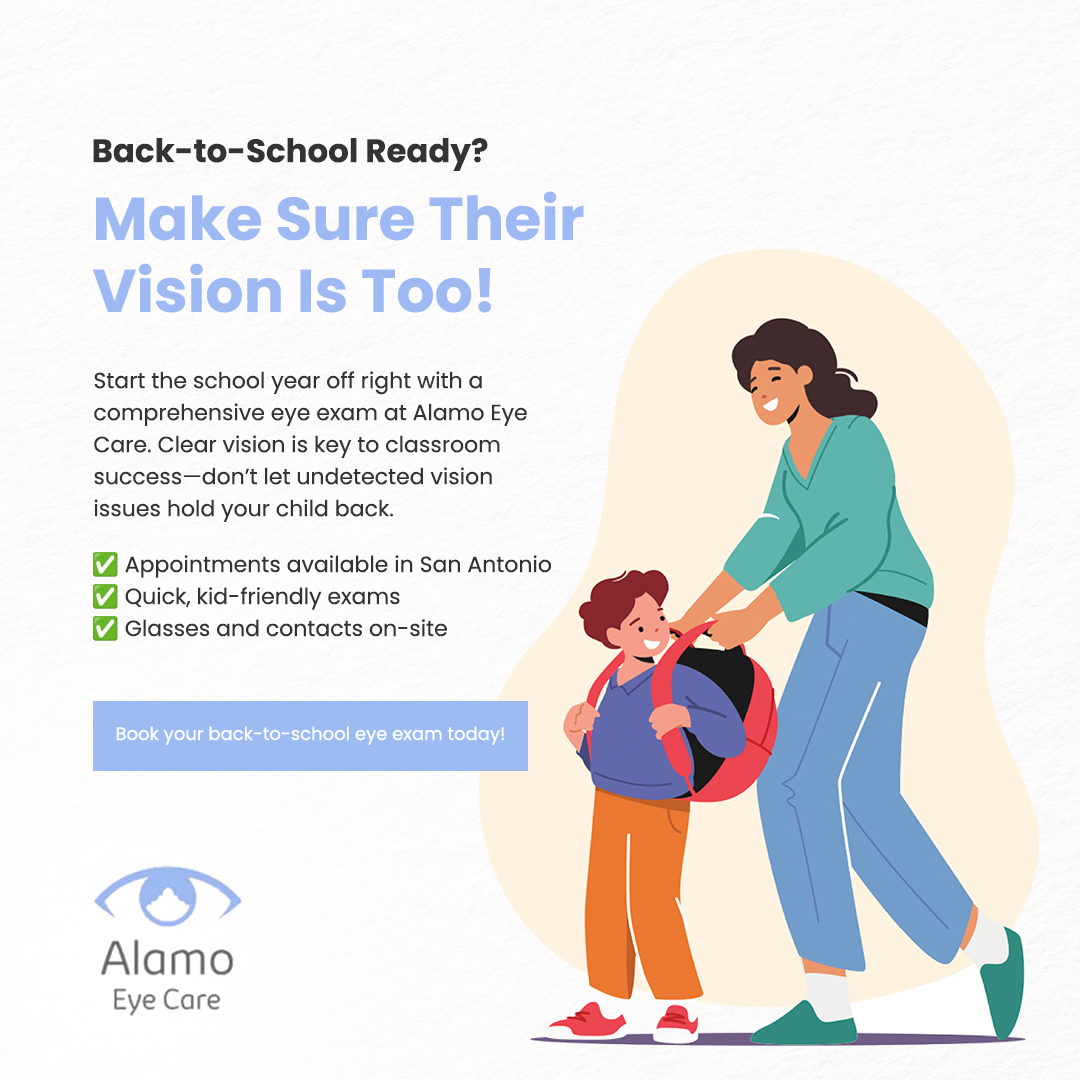Alamo Eye Care Blog
Learn more about optometry care in our blog!

As parents, we do everything we can to keep our children safe and healthy, but one area that often gets overlooked is eye health. A child’s vision plays a critical role in their learning, development, and overall well-being. Ensuring that they have strong, healthy eyesight from an early age can set them up for success in school, sports, and daily life. Here are some essential tips and tricks to help protect your child’s vision.

For individuals with eye conditions affecting the appearance of the iris, prosthetic iris lenses offer a remarkable solution. These specialty lenses are designed to improve the aesthetic appearance of the eye, helping individuals regain confidence in their look. Whether due to aniridia, coloboma, trauma, or other medical conditions, prosthetic iris lenses can provide both functional and cosmetic benefits.

Dry eye syndrome is more than just an annoyance—it can significantly impact your quality of life. At Alamo Eye Care, we understand how crucial it is to find effective solutions tailored to your needs. Advances in technology and treatment options have revolutionized how we address dry eye, offering relief and improved comfort to our patients.

Scleral lenses are gaining popularity as a versatile solution for individuals with various eye conditions. Unlike standard contact lenses, scleral lenses provide a unique fit and benefits, making them a suitable option for those struggling with traditional corrective methods. Let’s explore the signs that might indicate they’re the perfect solution for your vision needs.

When it comes to correcting vision, the choice between glasses and contact lenses can be challenging. Each option has its advantages and disadvantages, and the right choice ultimately depends on your lifestyle, preferences, and specific vision needs. At Alamo Eye Care, we’re here to help you make an informed decision. Let’s explore the pros and cons of glasses and contact lenses.

Diabetes affects millions of people worldwide, and its impact extends beyond blood sugar levels—it can also significantly affect eye health. Diabetic eye conditions, such as diabetic retinopathy, macular edema, glaucoma, and cataracts, are leading causes of vision impairment and blindness. Fortunately, proactive diabetic eye care can help preserve your vision and prevent serious complications. At Alamo Eye Care, we emphasize the importance of regular eye exams, early detection, and personalized care for individuals with diabetes.

Our eyes are windows to the world, allowing us to experience life in vivid color and detail. Yet, they are also vulnerable to a range of conditions that can impair vision and even lead to blindness. The key to maintaining healthy vision? Routine eye exams. At Alamo Eye Care, we’re passionate about helping our patients safeguard their sight through early detection and proactive care.

Scleral lenses have revolutionized the way we approach vision correction and eye health, offering solutions for individuals with complex or hard-to-treat conditions. These advanced lenses provide exceptional comfort, clarity, and therapeutic benefits. At Alamo Eye Care, we specialize in scleral lens fittings to help our patients achieve the best possible vision.

At Alamo Eye Care, we believe in proactive care to keep your eyes functioning their best. Whether you’re concerned about eye strain from long hours of screen time or simply want to preserve your vision as you age, here are some top tips to help you maintain healthy eyes.

In today's digital age, we spend more time in front of screens than ever before. Whether it's for work, entertainment, or connecting with loved ones, the increased screen time brings with it a common concern: digital eye strain. Known as Computer Vision Syndrome (CVS), digital eye strain can affect anyone who spends extended periods looking at digital devices. One of the culprits is blue light emitted from screens, which can contribute to eye discomfort and even disrupt sleep patterns. At Alamo Eye Care, we want to help you protect your eyes from digital strain and blue light exposure. Here’s what you need to know.








